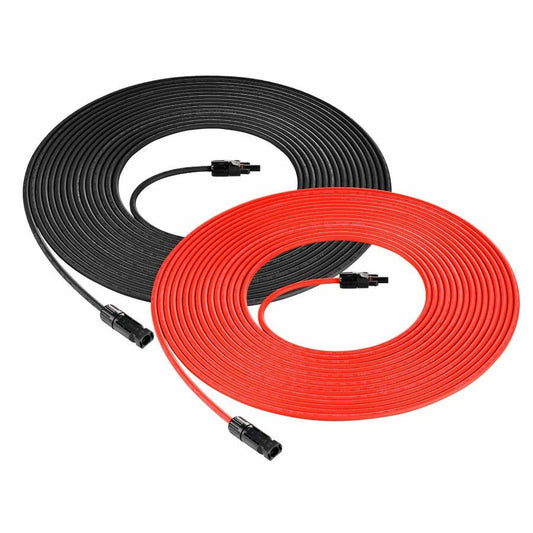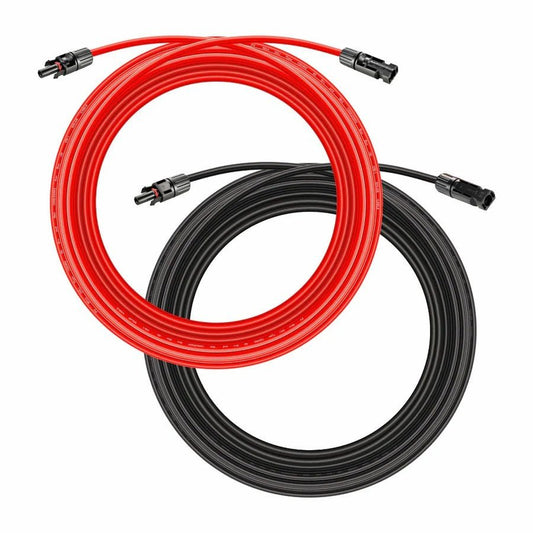Your Cart
Which Type of Battery is Best for Solar?

Which Type of Battery is Best for Solar?
Introduction
The integration of solar power into energy systems has become increasingly popular as the world shifts towards renewable energy sources. However, one of the critical components of an effective solar power system is the battery. The type of battery used can significantly impact the efficiency, cost, and overall performance of the system. This blog will explore the different types of batteries available for solar power systems, including their advantages and disadvantages, to help you determine which type is best for your needs.
Understanding Solar Batteries
Solar batteries store the electricity generated by solar panels for later use. This stored energy can be used during periods when the sun is not shining, such as at night or during cloudy days, ensuring a consistent power supply. The main types of batteries used in solar power systems include:
- Lead-Acid Batteries
- Lithium-Ion Batteries
- Nickel-Cadmium (NiCd) Batteries
- Flow Batteries
Each of these battery types has unique characteristics that make them suitable for different applications. Let's delve into each type to understand their strengths and weaknesses.
Lead-Acid Batteries
Overview
Lead-acid batteries are the oldest and most established type of rechargeable battery. They have been used in various applications, from automotive to backup power systems, and are now common in solar power systems.
Types of Lead-Acid Batteries
- Flooded Lead-Acid (FLA): Requires regular maintenance, including water refilling and cleaning.
- Sealed Lead-Acid (SLA): Also known as Valve Regulated Lead-Acid (VRLA) batteries, these include Absorbent Glass Mat (AGM) and Gel batteries, which are maintenance-free.
Advantages
- Cost-Effective: Lead-acid batteries are generally less expensive than other types.
- Proven Technology: With over 150 years of use, their reliability and safety are well-documented.
- Recyclable: Lead-acid batteries are highly recyclable, with about 98% of the materials being recoverable.
Disadvantages
- Limited Lifespan: Typically last 3-5 years, which is shorter compared to other battery types.
- Maintenance Requirements: Flooded lead-acid batteries require regular maintenance.
- Efficiency: Lower energy density and efficiency compared to lithium-ion batteries.
- Weight: Heavier and bulkier, making them less suitable for space-constrained applications.
Ideal Use Cases
Lead-acid batteries are ideal for applications where cost is a significant concern and space and weight are not critical factors. They are commonly used in off-grid solar systems and backup power systems.
Lithium-Ion Batteries
Overview
Lithium-ion batteries are relatively new compared to lead-acid batteries but have quickly become the preferred choice for many solar power applications due to their superior performance characteristics.
Types of Lithium-Ion Batteries
- Lithium Iron Phosphate (LiFePO4): Known for their safety and long lifespan.
- Lithium Nickel Manganese Cobalt Oxide (NMC): Offers a balance of power, energy density, and lifespan.
Advantages
- High Energy Density: Lithium-ion batteries can store more energy in a smaller space, making them ideal for residential and commercial solar power systems.
- Long Lifespan: Can last up to 10-15 years with proper care.
- Efficiency: Higher charge and discharge efficiency compared to lead-acid batteries.
- Low Maintenance: Requires little to no maintenance.
- Weight: Lighter and more compact.
Disadvantages
- Cost: Higher upfront cost compared to lead-acid batteries.
- Thermal Runaway: Can overheat if not properly managed, though modern battery management systems mitigate this risk.
- Resource Intensive: Mining and production processes for lithium can have significant environmental impacts.
Ideal Use Cases
Lithium-ion batteries are well-suited for residential and commercial solar power systems where space is limited, and long-term performance is a priority. They are also ideal for applications requiring high efficiency and minimal maintenance.
Nickel-Cadmium (NiCd) Batteries
Overview
Nickel-Cadmium batteries are another type of rechargeable battery that has been used for many years in various applications, including solar power systems.
Advantages
- Durability: NiCd batteries are known for their ruggedness and ability to operate in extreme temperatures.
- Long Cycle Life: Can endure many charge and discharge cycles.
- Low Maintenance: Does not require regular maintenance.
Disadvantages
- Environmental Concerns: Cadmium is a toxic metal, making disposal and recycling challenging.
- Memory Effect: Can suffer from reduced capacity if not fully discharged regularly.
- Cost: Higher cost compared to lead-acid batteries.
Ideal Use Cases
Nickel-Cadmium batteries are suitable for applications where durability and reliability in extreme conditions are critical, such as remote locations and industrial solar power systems.
Flow Batteries
Overview
Flow batteries are a relatively new technology in the field of energy storage. They store energy in liquid electrolytes contained in external tanks, which are pumped through a cell stack to generate electricity.
Types of Flow Batteries
- Vanadium Redox Flow Batteries (VRFB): The most common type of flow battery, known for its scalability and long lifespan.
Advantages
- Scalability: Easy to scale up by increasing the size of the electrolyte tanks.
- Long Lifespan: Can last 20 years or more with proper maintenance.
- Safety: Non-flammable and have a low risk of thermal runaway.
- Deep Discharge: Can be fully discharged without damaging the battery.
Disadvantages
- Cost: High initial cost compared to other battery types.
- Complexity: More complex system requiring pumps and tanks.
- Space Requirements: Requires more space due to the external tanks.
Ideal Use Cases
Flow batteries are ideal for large-scale energy storage applications, such as utility-scale solar power systems and grid storage, where scalability and long lifespan are critical factors.
Comparing Battery Types
To determine which type of battery is best for solar power systems, it's essential to compare the key characteristics of each type:
| Battery Type | Cost | Lifespan | Efficiency | Maintenance | Weight/Space | Environmental Impact |
|---|---|---|---|---|---|---|
| Lead-Acid | Low | 3-5 years | Moderate | High | High | Moderate |
| Lithium-Ion | High | 10-15 years | High | Low | Low | High |
| Nickel-Cadmium | Moderate | 10-15 years | Moderate | Low | High | High |
| Flow Batteries | High | 20+ years | High | Moderate | High | Moderate |
Factors to Consider When Choosing a Battery
When selecting a battery for your solar power system, consider the following factors:
- Budget: Determine how much you are willing to invest upfront and consider the total cost of ownership over the battery's lifespan.
- Space and Weight: Evaluate the available space and weight constraints of your installation site.
- Lifespan: Consider how long you need the battery to last and whether you are willing to perform regular maintenance.
- Efficiency: Higher efficiency batteries can store and release energy more effectively, which can be crucial for maximizing the use of solar power.
- Environmental Impact: Consider the environmental impact of the battery's production, use, and disposal.
- Application: Identify the specific needs of your application, such as backup power, off-grid living, or utility-scale storage.
Conclusion
The best type of battery for your solar power system depends on various factors, including budget, space, lifespan, efficiency, and environmental impact. Lead-acid batteries are cost-effective and reliable for basic applications, while lithium-ion batteries offer high efficiency and long lifespan for residential and commercial systems. Nickel-Cadmium batteries are suitable for extreme conditions, and flow batteries provide scalability and longevity for large-scale projects.
By carefully evaluating your specific needs and the characteristics of each battery type, you can make an informed decision that will optimize the performance and sustainability of your solar power system.
No comments





















0 comments